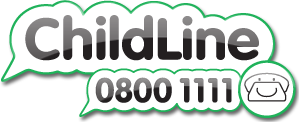Read Write Inc Phonics
'The four Read Write Inc. programmes provide a cohesive and creative approach to teaching children to read and write. Ruth Miskin’s trainers ensure that they are taught to the highest possible standard.'
Ruth Miskin
Children experience phonics teaching on a daily basis in small groups in Classes One and Two. This allows adults to really personalise learning for the children and promote accelerated learning.
Phonics is taught through the Read Write Inc phonics scheme. Please click here to find out more about the programme.
In phonics lessons children are taught four main things:
GPCs : This stands for grapheme phoneme correspondences. This simply means that they are taught all the phonemes in the English language and ways of writing them down. These sounds are taught in a particular order. The first sounds to be taught are m, d ,i , s, a, t, p.
Blending :Children are taught to be able to blend. This is when children say the sounds that make up a word and are able to merge the sounds together until they can hear what the word is. This skill is vital in learning to read.
Please click on the following links for videos to support your child at home with their blending.
https://www.oxfordowl.co.uk/for-home/reading-owl/find-a-book/read-write-inc-phonics--1/independent-blending-phonics-video
https://www.oxfordowl.co.uk/for-home/reading-owl/find-a-book/read-write-inc-phonics--1/sound-blending-phonics-video
Segmenting :Children are also taught to segment. This is the opposite of blending. Children are able to say a word and then break it up into the phonemes that make it up. This skill is vital in being able to spell words.
Using and applying: Children are taught to put these phonics skills into action so that they are not learnt in isolation. This is done in a variety of ways. Often, children are dictated a short sentence that contains the key phonemes and tricky words that have been taught. Sometimes, children play word soup and are encouraged to create their own sentences. We discuss the type of sentence that has been written and always use the correct punctuation - especially for question sentences!
Common exception words:
Sometimes called red words or tricky words, common exception words are rebels. They don’t quite follow the spelling or phonics rules that children are taught in years 1 and 2. Almost as soon as your child starts to read they will come across them and they are expected to be able to spell them correctly in their writing. We have attached the common exception words below.
Please take a look at the video links below.
In Key stage 1, children are taught to decode and encode in their reading and writing. The children are taught to use specific reading strategies that will enable them to be successful:
- Use phonics to 'sound out' or 'segment' words into easier chunks and putting the word back together again.
- Reading on to the end of the sentence to see if it helps.
- Using pictures as clues.
- Using a mixture of these strategies to make sense of the sentence. Often this means re reading sentences or a whole page.



